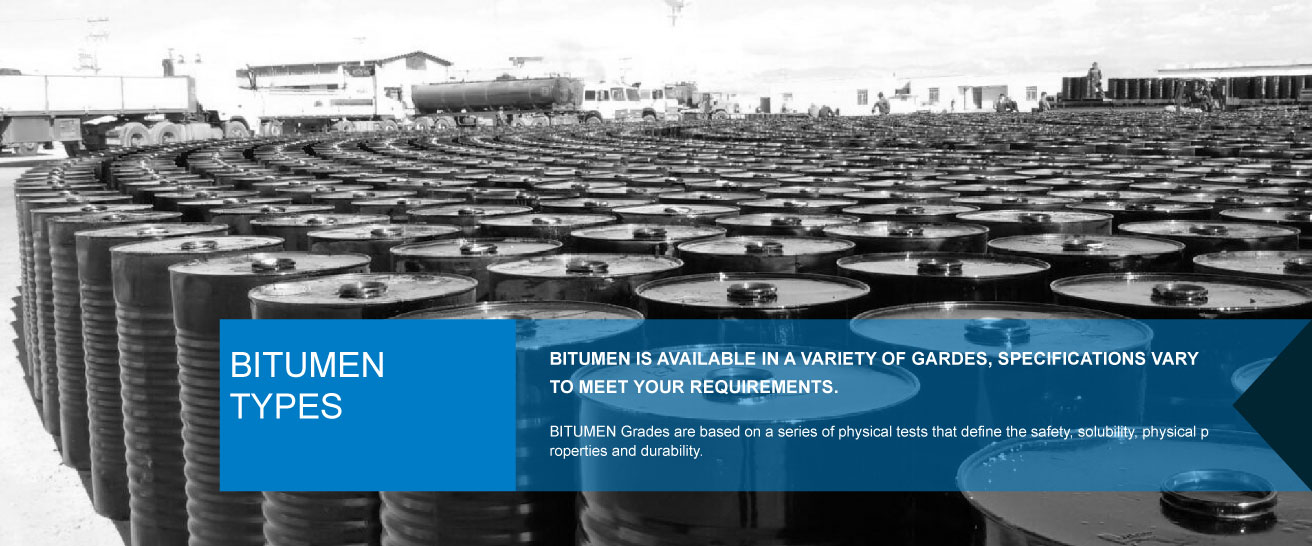
There are three main types of bitumens:
-
Penetration Grades
It is usually produced from residual materials in the crude oil atmosphere distillation after applying extra processing such as partial oxidation, solvent precipitation and etc. A combination of these processes must be used for making grades which are classified on the basis of permeability. We generally used them in road surfacing and roofing.
-
Oxidized Bitumens (Air Blown)
We pass air through raw material under control condition and then bitumen arises. Now we have bitumen with higher softening point, more durable and less sensitive to temperature and stresses. It has many other uses in building and industrial products such as: waterproof papers, electrical components, etc. Oxidized Bitumens is usually ranked according to its permeability and softness.
-
Performance Grade
(PG) is an Asphaltum which is graded due to its performance at different temperatures. An special algorithm is given by The Long-Term Pavement Performance (LTPP), this algorithm is about the pavement temperature based on above temperature. Based on this, bitumens that perform well in the range of the highest and lowest temperatures are selected.
-
Viscosity Grade
Viscosity Grade Bitumen (Asphalt) is a standard grade Asphaltum. This type of bitumen is usually used for asphalt payments with special features and also used in road construction. This type of asphalt is the raw material for making hot mix asphalt for bases and wearing courses. Also it has unique characteristics which distinguishes it from others. They make very flexible and strong connections with other materials, but this depends on how fast we join them together.
Polymer Modified
The solution to build road pavements for heavy traffic and also to protect roofs in different weather is to use Polymer modified bitumen (PMB). This kind of asphalt is like normal one but it has polymer. Due to this feature it is sturdy with high adhesion; It is resistant to deformation and stripping. So that it is required material for infrastructure.
-
Cutback bitumen
By adding petroleum hydrocarbon (Kerosene) to bitumen we can have petroleum which is diluted in Kerosene and is called Cutback bitumen. This material has been produced to reduce viscosity and increase penetration of bitumen on asphalt surface. In lower temperature of the layers in the road we can add cutback bitumen. Penetration bitumen is equal to the remaining bitumen in hardness after dissolving the solvent.
Cutback bitumen is categorized in 3 groups, according to their curing time:
- Rapid Curing (RC)
- Medium Curing (MC)
- Slow Curing (RC)
Bitumen Derivatives
4 general terms of bitumen derivatives:
- Cutback Bitumens
- Fluxed Bitumens
- Bitumen Emulsions
- Modified Bitumens
